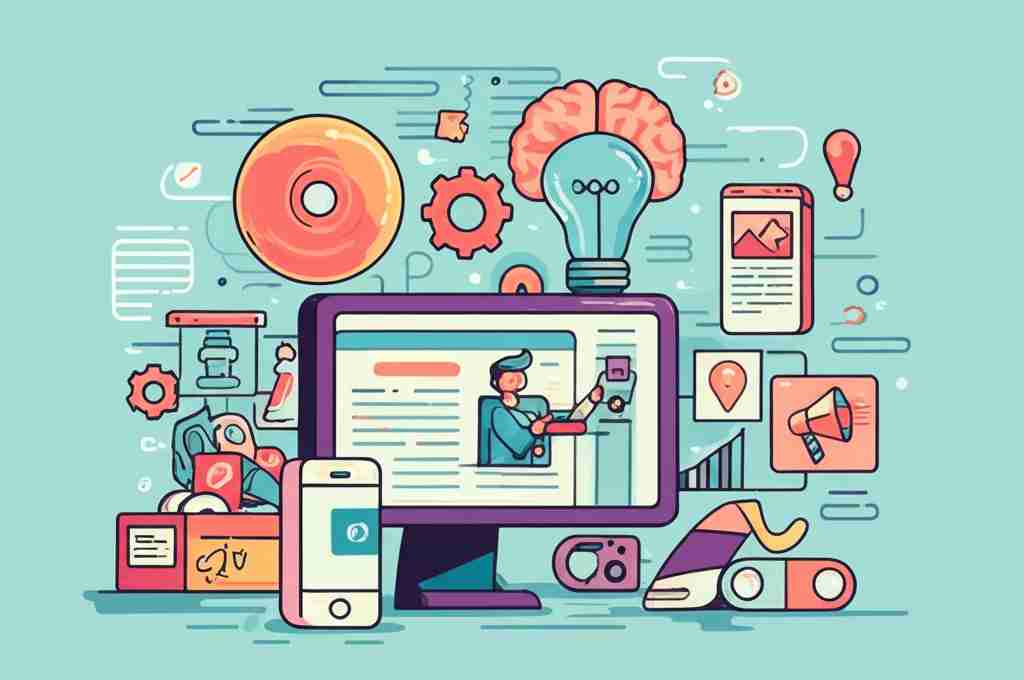
Understanding Retrieval Augmented Generation: Revolutionizing AI Agents
Estimated reading time: 7 minutes
Key Takeaways
- Retrieval Augmented Generation (RAG) enhances AI by integrating retrieval and generation processes.
- RAG offers higher accuracy and better efficiency compared to traditional models.
- Its real-world applications extend across various industries like healthcare and finance.
- Implementing RAG requires careful consideration of data sources and frameworks.
- Future advancements in RAG could lead to deeper personalization and broader applications.
Table of contents
Retrieval Augmented Generation (RAG) combines two powerful aspects of artificial intelligence—retrieval and generation—to enhance the performance of AI agents. This innovative approach allows AI systems to pull in existing data and generate responses effectively, offering more accurate and context-aware results. As AI technology evolves, the importance of RAG in improving AI functionalities across various industries becomes increasingly significant.
How RAG Works
Retrieval augmented generation works by seamlessly integrating the retrieval of external knowledge and the generation of natural language. Here’s how it unfolds:
- Retrieval Process:
When a query is presented, the system first retrieves relevant information from a vast database or knowledge source. This could involve searching through documents, web pages, or structured databases to find contextual data. - Generation Process:
Once relevant information is retrieved, the AI generates a coherent and context-appropriate response. Leveraging linguistic models, it crafts answers that not only address the query but also incorporate specific information extracted during retrieval.
This two-step approach enhances the AI’s ability to provide precise answers, making it a superior framework compared to simple generative models that rely solely on pre-learned knowledge.
Benefits of RAG in AI Applications
The advantages of retrieval augmented generation in AI applications are several:
- Enhanced Accuracy: RAG pinpoints relevant information leading to factually correct outputs.
- Improved Efficiency: The integration of real-time data retrieval shortens response times.
- Optimal User Experience: Tailored responses increase user satisfaction, making interactions with AI agents more fruitful.
- Better Data Handling: RAG allows for dynamic access to up-to-date information, maintaining the relevance of responses in a rapidly changing information environment.
The power of retrieval augmented generation is paving the way for creating smarter AI agents capable of better serving their users. With AI Automation Darwin, businesses can leverage this technology to enhance their operations and customer-based services.
RAG vs Traditional LLM (Large Language Models)
Key Differences: RAG vs Traditional LLM
When comparing retrieval augmented generation to traditional large language models, the distinctions become apparent. Here are the key differences:
- Information Scope: Traditional LLMs generate responses based solely on their training data, which may not include the latest information. In contrast, RAG systems pull from a continuously updated database, providing answers that reflect current knowledge.
- Response Relevance: Traditional models may produce generic or off-topic responses, while RAG ensures that the information is closely related to user queries, improving relevancy.
- Data Utilization: RAG makes more efficient use of data by integrating retrieval methods, allowing for more contextually rich interactions.
Advantages of RAG
The benefits of using retrieval augmented generation include:
- Enhanced Output Relevance: Responses generated through RAG are more contextually appropriate because of the retrieval step.
- Improved Information Retrieval: RAG capabilities allow AI systems to supply specific and accurate information quickly.
- Dynamic Learning: As new data is added to the database, RAG agents adapt naturally, constantly improving their responses.
Scenarios for RAG Advantages
RAG significantly outperforms traditional LLMs in several scenarios:
- Customer Support: When answering customer queries, RAG can pull real-time data from support databases or FAQs, while LLMs may hesitate with outdated information.
- Research Assistance: In fields such as medicine or technology, RAG retrieves the most recent studies or findings, ensuring that professionals discuss the latest developments.
- Interactive Personalization: RAG can personalize AI interactions based on retrieved user data, creating a more engaging user experience.
Implementation Guide for RAG
Steps for Implementing RAG in AI Systems
Integrating retrieval augmented generation into AI systems involves several key steps:
- Define Use Cases: Clearly establish the primary context in which RAG will be utilized—such as customer service, information retrieval, or personalized recommendations.
- Data Source Identification: Determine relevant databases or information sources to be linked with the RAG system. These could be internal databases, external APIs, or knowledge bases.
- Select Implementation Framework: Many frameworks can aid with RAG integration, such as Haystack, DialoGPT, or Rasa. Choose one based on specific needs.
- Train the Model: Utilize your selected framework to train your RAG model on your use case data, constantly refining for accuracy.
- Testing and Evaluation: Rigorously test the system with diverse queries to evaluate performance, ensuring high accuracy and relevance in responses.
- Feedback Loop: Implement a feedback loop that captures user interactions to continuously optimize the RAG system.
Tools and Frameworks
Several tools and frameworks can facilitate RAG implementation:
- Haystack: An open-source framework designed specifically for building RAG systems.
- Rasa: A robust conversational AI framework that supports custom actions and context management.
- OpenAI’s APIs: Features capabilities for both retrieval and language generation.
Best Practices and Common Pitfalls
To successfully implement RAG, consider the following best practices:
- Regularly Update Data Sources: Ensure that the information repositories linked with RAG are frequently updated.
- Prioritize User Feedback: Use feedback to further refine the AI’s response patterns and improve user experience.
It’s also vital to be aware of common pitfalls:
- Underestimating Data Quality: Relying on low-quality data for retrieval can lead to inaccurate outputs; prioritize authoritative sources.
- Neglecting System Testing: Failing to test extensively can result in overlooked issues that could hinder performance or usability.
Real-World Applications of Retrieval Augmented Generation
Examples of RAG in Various Industries
Retrieval augmented generation is transforming multiple industries by enhancing how AI systems perform:
- Healthcare: RAG aids in providing up-to-date medical information and recommendations, allowing practitioners to access accurate data quickly.
- Finance: By retrieving real-time market data, RAG systems can help finance professionals with rapid analysis and reactive trading strategies.
- Customer Service: AI chatbots equipped with RAG can handle inquiries more effectively by pulling information from comprehensive FAQs and product manuals.
Successful RAG Implementations
Several prominent examples showcase the successful use of retrieval augmented generation in real-world applications:
- IBM Watson for Healthcare: Utilizing RAG, Watson can retrieve the latest cancer treatment protocols, aiding physicians in making informed decisions.
- Google’s Search AI: Harnessing RAG’s principles, Google’s AI systems continuously pull relevant data from the internet, providing users with timely and accurate search results.
These case studies illustrate how RAG significantly impacts efficiency and accuracy in operations.
Future Implications
As RAG technology advances, future enhancements may lead to:
- Deeper Personalization: RAG can tailor AI interactions even more based on retrieved user data, improving overall user satisfaction.
- Better Predictive Analysis: Enhanced data retrieval might yield more accurate predictive capabilities, helping businesses anticipate trends or customer needs.
- Broader Applications: As more sectors recognize the advantages of RAG, its usage could expand, integrating with other emerging technologies like IoT and Blockchain.
Conclusion
In summary, retrieval augmented generation is redefining the landscape of artificial intelligence. By integrating retrieval processes with generative models, RAG enhances the accuracy, efficiency, and relevance of AI interactions.
We encourage you to explore further into retrieval augmented generation and its many applications. From improving customer experiences to revolutionizing healthcare practices, RAG presents an exciting frontier in AI development.
Join the conversation! Please share your thoughts, experiences, or questions regarding retrieval augmented generation in the comments below.
Frequently Asked Questions
What are some common uses for RAG?
RAG can be used in customer support, research assistance, and interactive personalization among various applications across industries.
How does RAG improve response relevance?
By integrating a retrieval process, RAG ensures that responses are based on the most up-to-date and relevant information, enhancing the overall user experience.
Can RAG be implemented in existing AI systems?
Yes, RAG can be integrated into existing AI systems through the addition of relevant databases and retraining with RAG-specific strategies.
About Us
At AI Automation Darwin, we specialise in empowering local businesses through intelligent automation and AI-driven solutions designed specifically for your unique challenges. Our services are tailored to streamline your operations, enhance customer engagement, and drive growth without overwhelming your resources.
We offer innovative AI Agent solutions such as Product Assistant Chatbots, which instantly handle customer inquiries about product details, pricing, availability, and shipping—significantly reducing repetitive tasks for your team. Our AI agents seamlessly integrate with your existing website and e-commerce platforms, providing 24/7 responsive customer service that enhances user satisfaction and boosts your online sales.
Additionally, our automation solutions extend to business-critical processes including DocuSign Agreement Workflows, Training Booking Email Systems, and Lead Qualification Bots. Each solution is customised to your specific business operations, ensuring accuracy, efficiency, and seamless integration with your current technology stack.
Our Customer Follow-Up Automation ensures timely, personalised communication, helping you nurture leads effectively and retain existing customers. Meanwhile, our intelligent FAQ & Information Hub Agents offer instant, precise answers to common queries, allowing your human team to focus on high-value tasks.
Partnering with AI Automation Darwin means you’re investing in smart solutions that simplify your workflows, eliminate costly errors, and create remarkable customer experiences. Whether you operate in e-commerce, hospitality, real estate, trades, professional services, healthcare, or education, our customised AI and automation services are designed to propel your business forward.
Experience firsthand how intelligent automation can enhance your efficiency, save time, and amplify profitability. Let AI Automation Darwin unlock your business’s true potential—making your operations smarter, faster, and more profitable.









